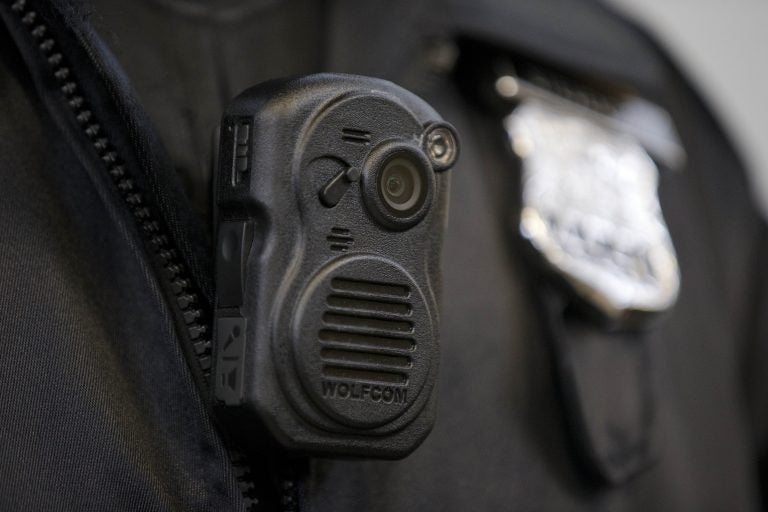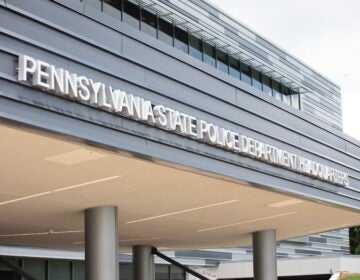Pennsylvania State Police launch body-camera pilot program
Mary Catherine Roper of the ACLU of Pennsylvania gives the new policy a B-minus.

In this file photo, a Philadelphia Police officer demonstrates a body camera used as part of a pilot project in December 2014 in Philadelphia. (Matt Rourke/AP Photo)
Last summer, Pennsylvania State Police received a $52,000 federal grant to create a policy on body-worn cameras and train officers in their use. Last week, the program debuted in three departments.
Officers in Avondale, Uniontown, and those patrolling the Pennsylvania Turnpike are sharing 30 body cameras to work out best practices.
The policy, available online, has already drawn some criticism.
Mary Catherine Roper with the ACLU of Pennsylvania praised its specificity on incidents requiring camera activation, but she said there’s a lack of clarity on when those incidents begin. Leaving it to an officer’s discretion can leave out important information leading up to an event.
“As soon as an officer is engaging with a member of the public, that camera should be on,” she said.
Overall, she gave the policy a B-minus.
“This is the most specific and detailed policy I’ve seen so far,” she said “And that is really encouraging. Because, hopefully, police departments are learning from each other as we go along to make these things better over all.”
Ryan Tarkowski, state police spokesman, said police leadership fully supports the use of body cameras.
“It’s definitely going to be a solid tool, not only to build that trust and confidence in law enforcement,” he said. “But also serves as an investigative tool for our troopers in the field.”
Funding is the main hurdle to statewide use, he said. The $52,000 grant covered 30 cameras, hardware, and training — and implementing that for the force’s 4,300 officers is a challenge at the moment.
Data storage and bandwidth also drive up the cost, said Tarkowski, especially in rural areas.
The program will run through December 2018 and will be evaluated by both community stakeholders and police officers involved in the program, Tarkowski said.
WHYY is your source for fact-based, in-depth journalism and information. As a nonprofit organization, we rely on financial support from readers like you. Please give today.





